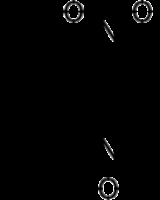
4-Nitroquinoline 1-oxide
Encyclopedia
4-Nitroquinoline 1-oxide (also known as 4-NQO, 4NQO, 4Nqo, NQO and NQNO) is a quinoline
derivative and a tumorigenic
compound used in the assessment of the efficacy of diet
s, drugs
, and procedures in the prevention and treatment of cancer
in animal model
s. It induces DNA lesions usually corrected by nucleotide excision repair
.
Quinoline
Quinoline is a heterocyclic aromatic organic compound. It has the formula C9H7N and is a colourless hygroscopic liquid with a strong odour. Aged samples, if exposed to light, become yellow and later brown...
derivative and a tumorigenic
Carcinogenesis
Carcinogenesis or oncogenesis is literally the creation of cancer. It is a process by which normal cells are transformed into cancer cells...
compound used in the assessment of the efficacy of diet
Diet (nutrition)
In nutrition, diet is the sum of food consumed by a person or other organism. Dietary habits are the habitual decisions an individual or culture makes when choosing what foods to eat. With the word diet, it is often implied the use of specific intake of nutrition for health or weight-management...
s, drugs
Medication
A pharmaceutical drug, also referred to as medicine, medication or medicament, can be loosely defined as any chemical substance intended for use in the medical diagnosis, cure, treatment, or prevention of disease.- Classification :...
, and procedures in the prevention and treatment of cancer
Cancer
Cancer , known medically as a malignant neoplasm, is a large group of different diseases, all involving unregulated cell growth. In cancer, cells divide and grow uncontrollably, forming malignant tumors, and invade nearby parts of the body. The cancer may also spread to more distant parts of the...
in animal model
Animal model
An animal model is a living, non-human animal used during the research and investigation of human disease, for the purpose of better understanding the disease without the added risk of causing harm to an actual human being during the process...
s. It induces DNA lesions usually corrected by nucleotide excision repair
Nucleotide excision repair
Nucleotide excision repair is a DNA repair mechanism. DNA constantly requires repair due to damage that can occur to bases from a vast variety of sources including chemicals, radiation and other mutagens...
.

